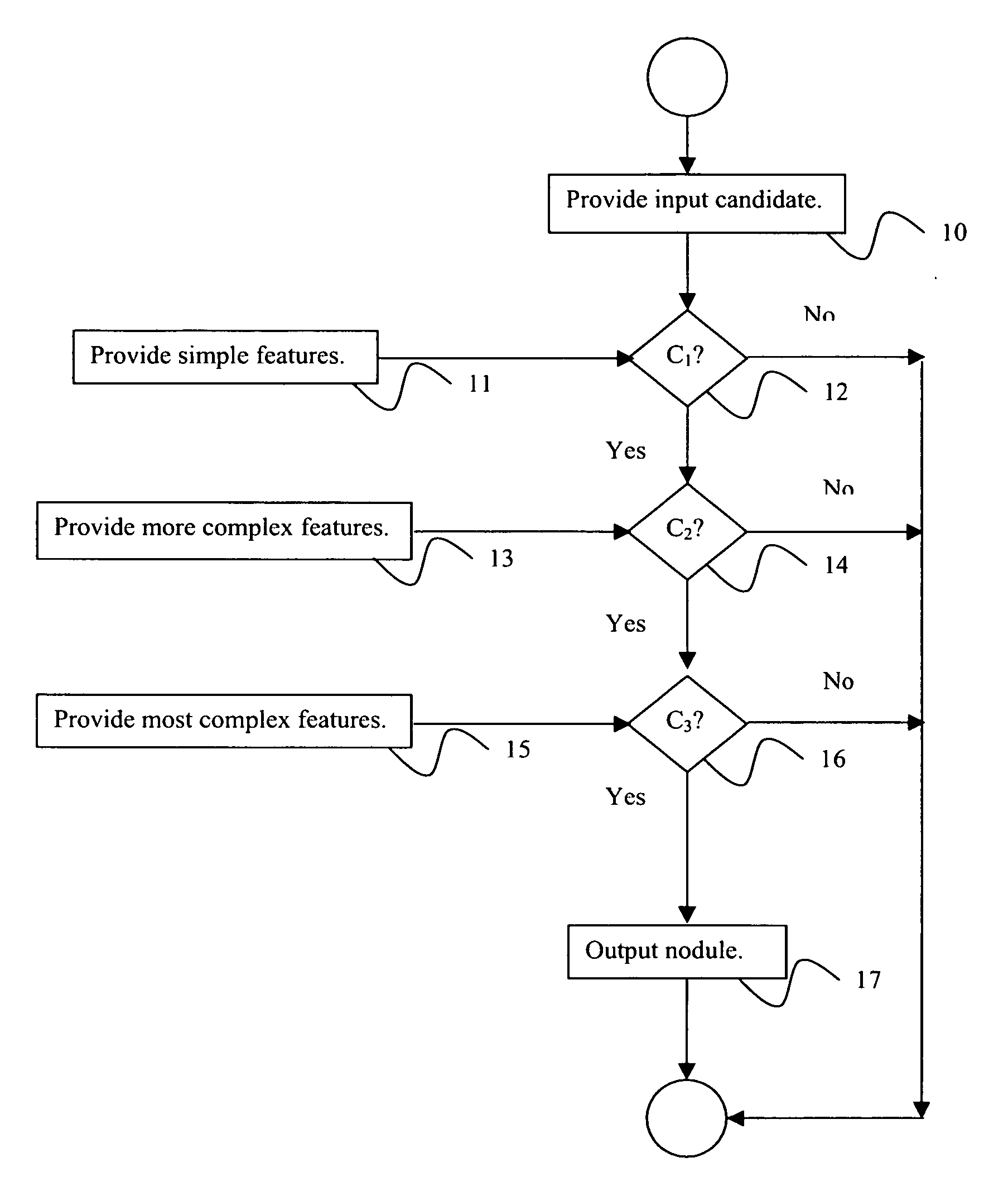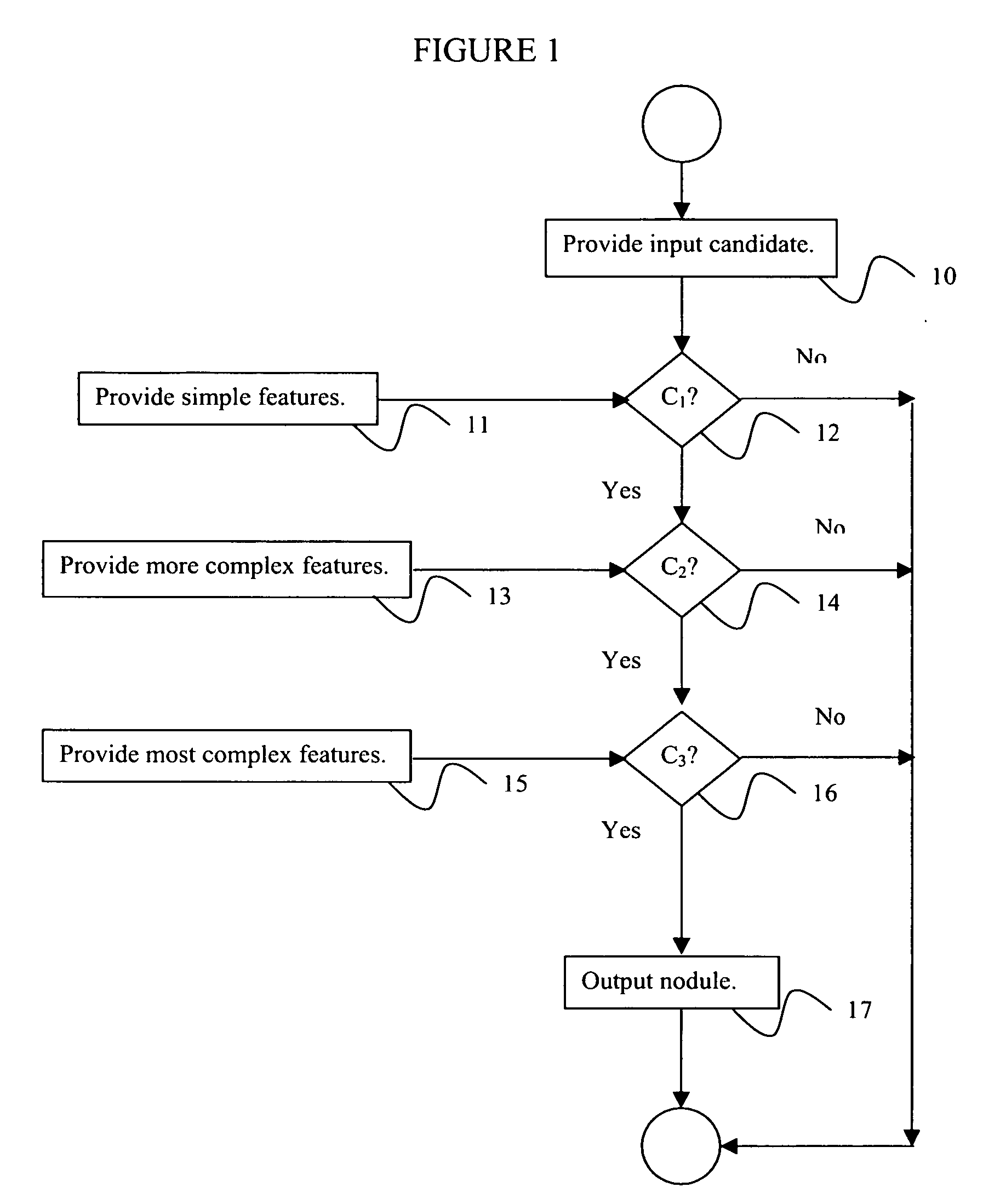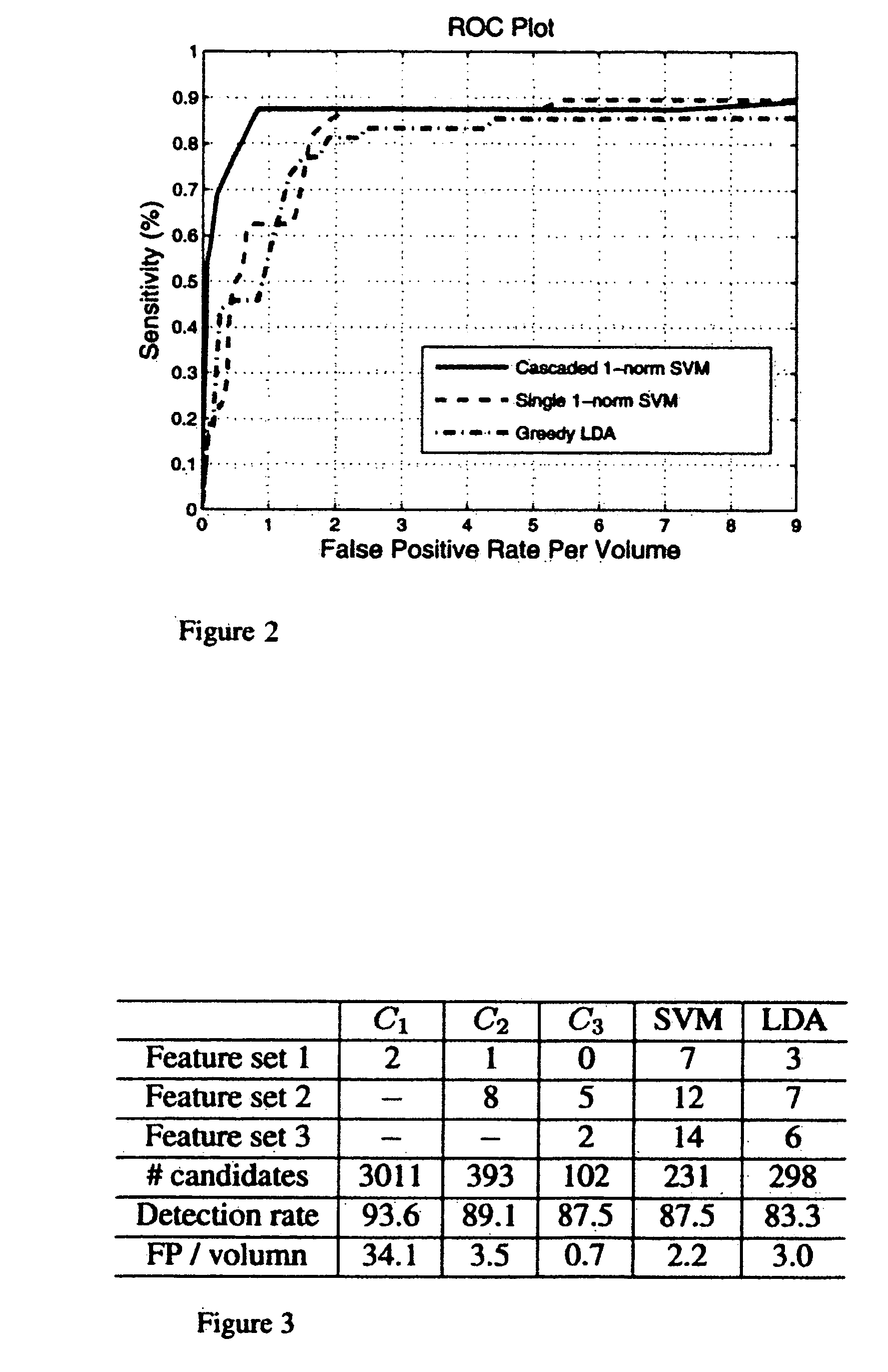System and method for computer aided detection via asymmetric cascade of sparse linear classifiers
a linear classifier and sparse linear technology, applied in the field of classification, can solve the problems of only calculating computationally expensive features, and the cascade of a few stages is unlikely to harm the robustness of linear classifiers, and achieve the effect of general accuracy
- Summary
- Abstract
- Description
- Claims
- Application Information
AI Technical Summary
Benefits of technology
Problems solved by technology
Method used
Image
Examples
Embodiment Construction
[0029] Exemplary embodiments of the invention as described herein generally include systems and methods for computer-aided detection using a cascade classification approach which employs an asymmetric cascade of sparse classifiers each trained to achieve high detection sensitivity and satisfactory false positive rates. Further embodiments incorporate feature computational costs in a linear program formulation that allows the feature selection process to take into account different evaluation costs of various features. Further embodiments include a boosting algorithm derived from column generation optimization to effectively solve the proposed cascade linear programs. Accordingly, while the invention is susceptible to various modifications and alternative forms, specific embodiments thereof are shown by way of example in the drawings and will herein be described in detail. It should be understood, however, that there is no intent to limit the invention to the particular forms disclos...
PUM
 Login to View More
Login to View More Abstract
Description
Claims
Application Information
 Login to View More
Login to View More - R&D
- Intellectual Property
- Life Sciences
- Materials
- Tech Scout
- Unparalleled Data Quality
- Higher Quality Content
- 60% Fewer Hallucinations
Browse by: Latest US Patents, China's latest patents, Technical Efficacy Thesaurus, Application Domain, Technology Topic, Popular Technical Reports.
© 2025 PatSnap. All rights reserved.Legal|Privacy policy|Modern Slavery Act Transparency Statement|Sitemap|About US| Contact US: help@patsnap.com



